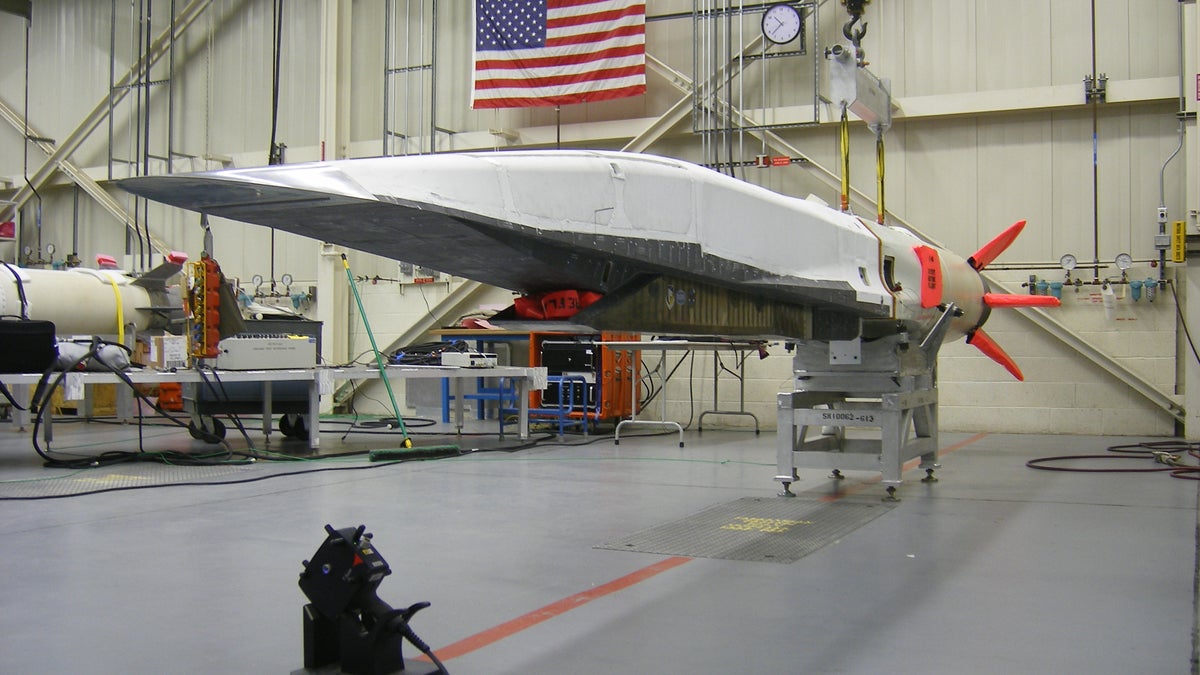X-51A races to hypersonic record
The Air Force's experimental, scramjet-powered Waverider makes a short but historic flight in a test range over the Pacific Ocean.
The X-51A Waverider flew today, and it flew fast.
The scramjet engine in the experimental aircraft burned for a little over three minutes at around 10 a.m. PDT Wednesday in a test range over the Pacific Ocean, pushing the X-51A to the hypersonic speed of Mach 5, or five times the speed of sound. That was the top speed reached by the aircraft in its brief flight, according to Boeing and press reports citing U.S. Air Force officials. (Editors' note: A separate Air Force News Service report had initially cited a higher speed, but was amended to give the Mach 5 figure.)
The 200 seconds of autonomous flight by the U.S. Air Force's X-51A set a duration record for an aircraft powered by a scramjet (short for "supersonic combustion ramjet") engine, though in part that can be chalked up to the rarity of any flights at all at this extreme level. The previous record was set by NASA's X-43A, whose scramjet engine burned for only about 10 to 12 seconds in November 2004; that aircraft zoomed to Mach 9.8.
It had been expected that the X-51A would fly for as long as 300 seconds (that is, five minutes) and would hit Mach 6. During Wednesday morning's flight, the Waverider suddenly lost acceleration shortly after the 200-second mark for an unexplained reason. "At that point," Boeing's press release says tersely, "the X-51A was terminated as planned." (The Air Force had previously said it had no plans to recover the aircraft.)
Still, those involved in the flight were thrilled with the results.
"We are ecstatic to have accomplished most of our test points on the X-51A's very first hypersonic mission," said Charlie Brink, an X-51A program manager with the Air Force Research Laboratory, in a statement. "We equate this leap in engine technology as equivalent to the post-World War II jump from propeller-driven aircraft to jet engines."
The air-breathing scramjet engine does hold promise for advancing the state of aeronautics. Because it can use atmospheric oxygen, for instance, it wouldn't need to carry oxidizers as do today's rockets, or could get by with less fuel. That could mean cheaper rocket launches into orbit for a future generation of space planes. From the Air Force's perspective, scramjets could also mean missiles getting to their targets much faster than current cruise missiles.
Continuing a long tradition of X planes, the X-51A was carried aloft by a B-52 before being released at about 50,000 feet. A solid rocket booster accelerated the Waverider to about Mach 4.5 before its own Pratt & Whitney Rocketdyne scramjet engine was ignited to take it to about 70,000 feet and Mach 5.
The aircraft that flew Wednesday was one of four X-51A cruisers that have been built. The remaining three could fly this fall, the Air Force said Wednesday, and would have nearly identical flight profiles.
Update, Thursday 5:08 a.m. PDT: See video of the launch from the B-52 below:


